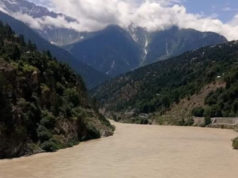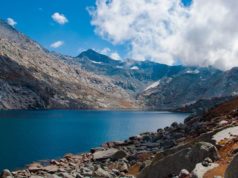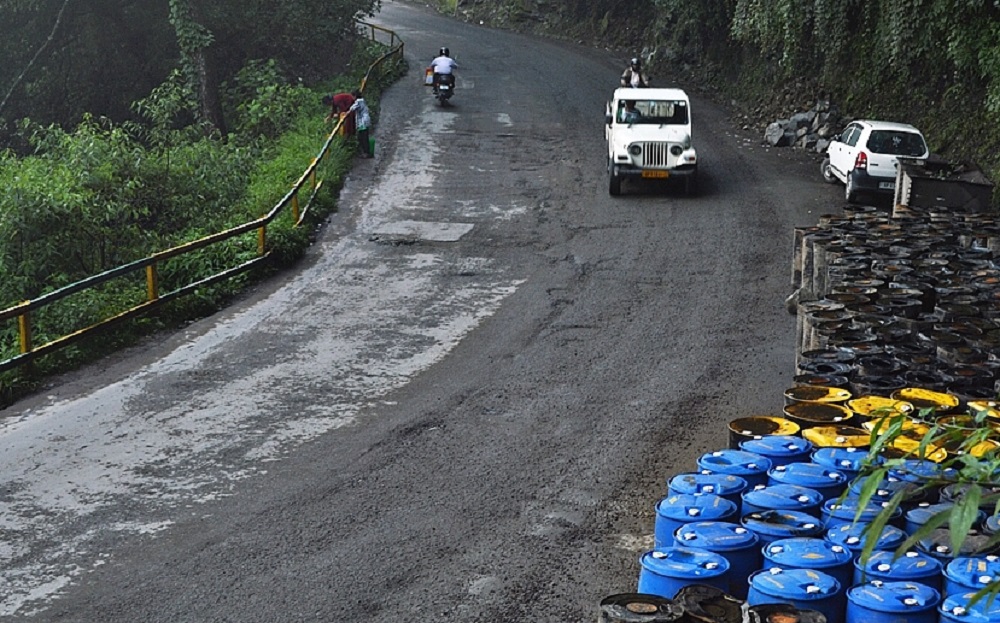Shimla: State Government has been very proactive to mitigate the climate induced hazards and undertaking various studies to understand the threat arising out of the climate change. Ever since the Government took a decision to focus on research and mitigating strategies to combat the impact of climate change with the establishment of the State Centre for Climate Change under the aegis of the State Council for Science Technology and Environment. The Centre has initiated integrated efforts to translate the Government policy into actions.
Secretary Environment, Science and Technology Rajneesh informed that in view of this, the department has planned to undertake mapping of all the glacial lakes which are being formed at the glacier snouts by virtue of the melting of the Himalayan glaciers and which may contain a large quantity of water causing great damage in case if they burst in future. He also cited an example of Kedarnath tragedy correlating the bursting of a small lake at the snout of Chorabari glacier in Uttrakhand Himalaya along with heavy precipitation during that time.
The State Centre has been working on this issue of vital importance and undertakes the regular monitoring of glacial lakes to understand the phenomena of Glacier Lake Outbursts Floods (GLOFs) in Himachal Pradesh in different basins as well as in the adjoining Tibetan catchment of the Satluj River basin using the space data.
Himachal Pradesh invariably experiences flash floods, the cause of which is unknown. In the year 2020, the Satluj valley experienced the heaviest floods causing economic loss of more than 800 crores. The cause of the flood event was not known to the experts that whether the floods were caused by cloud bursting or due to Glacial Lake Outburst Floods (GLOFs) phenomena as it started from the Tibetan Himalayan Region.
The formation of landslide dammed lakes in high altitude zones such as Parchu in the upper catchment of Spiti basin in Tibet caused tremendous threat to the life and property located in the downstream areas since its inception in the year 2004. It is therefore necessary that a constant and repeated monitoring of the upper catchment areas having international dimensions is required to be carried out on a regular basis.
Based on the study carried out in 2019 by the Centre, the Satluj basin reveals the presence of total 562 lakes in 2019 out of which about 81percent (458) lakes are small one with area less than 5ha, about nine percent (53) falls within the aerial range of 5-10ha and about nine percent (51) are the big one with area more than 10ha.
The Chenab basin comprising mainly of Chandra, Bhaga, Miyar as sub basins have a total of 242 lakes (2019) comprising 52 lakes in Chandra, 84 lakes in Bhaga and 139 in the Miyar sub basins respectively.
The Beas basin comprising of Upper Beas, Jiwa, Parbati has a total of 93 lakes comprising 12 lakes in Upper Beas, 41 lakes in Jiwa and 37 lakes in Parvati sub basins in 2019 indicating an increase of about 43 percent as compared to 2018.
In view of the increasing trend of the lakes being formed at higher altitudes of the Himalaya Region in Himachal Pradesh and the adjoining Tibetan Himalayas, D.C. Rana, Director-cum-Special Secretary (Rev-DM) who is also holding the charge of Member Secretary, HIMCOSTE informed that it is not possible to keep a watch on the lake formation leading to GLOFs events in the higher Himalayan region because of the accessibility issues by any conventional methods and thus the space technology has proven to be more useful and helpful in carrying out the investigation in such terrains. He said that the State Centre on Climate Change of the HIMCOSTE has been undertaking the mapping and monitoring of all such lakes which helps in making a pre-assessment about the vulnerable lakes being formed either in Himachal or in the adjoining Tibetan Himalayas which drains into the Indian Territory along the Satluj river as part of Disaster Management Plans of the State Government. He further said that the lakes with area greater than 10 hectare and having area between 5-10 hectare can be seen as the potential vulnerable sites for causing damage, in case of bursting of any one of them realizing that a proper monitoring and change analysis of all such lakes in higher Himalayan region of the State is critical for averting any future eventually in Himachal Pradesh, so that the precious human lives and the infrastructure are saved.







